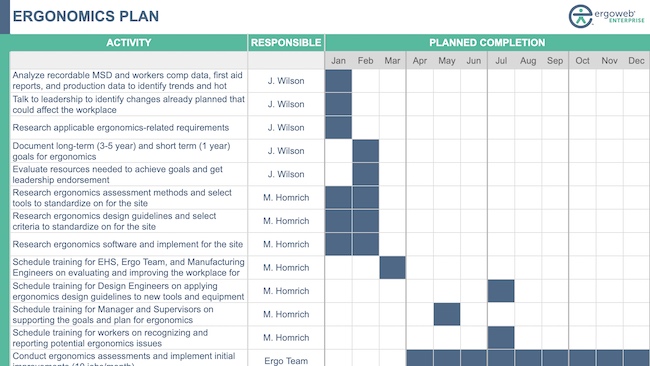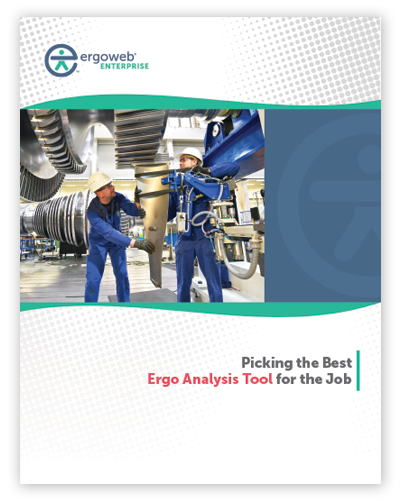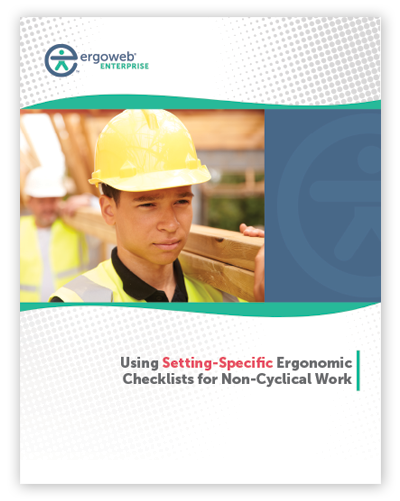Ergoweb® Learning Center
We’ve published and shared thousands of ergonomics articles and resources since 1993. Search by keyword or browse for topics of interest.
Downloadable Guides
Open Access Articles
September 13, 2012
In this article, reprinted from The Ergonomics Report, guest contributor Janet Peterson provides a concise, useful guide to keyboard trays as a means to add adjustability to a fixed height desk or work surface. She provides actionable advice on when a keyboard tray may be the right solution, what "must-have" features to look for, and which optional features will improve workstation ergonomics. She also offers considerations for corner and "U" shaped work stations, and provides wise words of caution regarding keyboard trays advertised as "sit/stand" or "sit-to-stand".
September 6, 2012
In this article, reprinted from The Ergonomics Report, guest contributors Linda Miller and Lucy Hart provide an update on the emergence of ergonomics as a points category in the Leadership in Energy and Environmental Design (LEED) building rating system. Over a decade ago, a coalition of building industry leaders in the U.S. created building design and construction guidelines for the environmental assessment of buildings. The LEED Building Rating System is a voluntary, consensus-based standard that evaluates the environmental performance of a building over its entire life cycle. The primary goal of LEED is to promote building practices that are environmentally responsible, profitable, and healthy for its building occupants, and Miller and Hart explain how ergonomics is gaining a solid footing in the LEED rating system.
September 5, 2012
The Board of Certification in Professional Ergonomics (BCPE) announces the hiring of Carol Stuart-Buttle, MS, CPE as its new Executive Director.
August 22, 2012
In this article, reprinted from The Ergonomics Report, guest contributor Jill Kelby makes a case for ergonomists need to at least educate themselves, if not become actively involved, in emerging government initiatives wrapped around the concept of "wellness." As she explains, initiatives by the USA based NIOSH and NPC (National Prevention Council) appear to be co-opting ergonomics terminology and methods under the banner of "wellness," yet her research suggests that ergonomists have not been included or consulted in the development of these initiatives. She makes a case for why it should concern you, as well, and calls ergonomists to action.
August 14, 2012
Peter Budnick reviews an important research article written by well-known ergonomics researcher William Marras. In this seminal paper, Marras summarizes the state of our understanding of the factors that contribute to low back pain and disorders, charts a course for future research, and recommends that ergonomics practitioners, among other things, take a broader systems approach that goes beyond traditional physical loading risk analysis to include mental and wellness components. According to Marras, "... one needs to consider the social, occupational, spiritual, physical, intellectual, emotional, financial, mental, and medical aspects of the environment if one is to truly minimize the risk of low-back problems."
August 2, 2012
In this study, reviewed by contributor Tim Villnave and republished from The Ergonomics Report, researcher J Arendt suggests that while night work may have its advantages, his review of the literature indicates there is a price to pay relative to work productivity and personal health.
August 2, 2012
Brazilian researchers Buarque de Macedo Guimar
July 26, 2012
In this article, which originally in The Ergonomics Report, Don Bloswick, a professor in in the Mechanical Engineering Department at the University of Utah, shares a variety of creative rehabilitation ergonomics applications he and his students have developed, including a tricycle designed to provide leg exercises for children with Cerebral Palsy (CP); an off-road walker allowing children with CP greater outdoor mobility; a wheelchair track device that allows wheelchair users to navigate on sand, snow and other rough terrain; foot and arm-lever propelled wheelchairs; and a paragliding system for people with disabilities. If you think ergonomics is only about preventing musculoskeletal injuries, this will open your eyes to new horizons.
July 26, 2012
Risk factors that contribute to or cause MSDs have long been debated by ergonomics professionals and researchers. Peter Budnick reviews the findings of recent research that hones in on the cause-and-effect relationships between certain physical ergonomics risk factors and work-related MSDs, offering opinions on the importance of this science, as well as the need for the ergonomics marketplace to strengthen its MSD assessment tools, and perhaps more important, grow its value proposition beyond MSDs.






